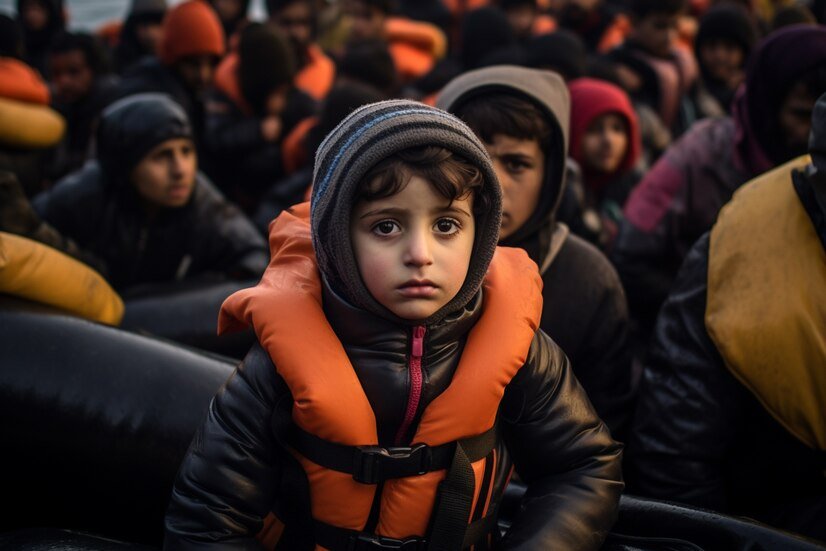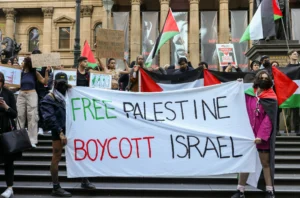Introduction to the Hostage Crisis
The world is watching as the hostage crisis involving Hamas continues to unfold. Families are torn apart, communities are shaken, and nations grapple with complex political dynamics. As individuals remain in captivity, their fates hang in the balance amid uncertainty and fear. What do we know about these hostages? How has this situation affected those waiting for loved ones to return home? Join us as we explore the current conditions of Hamas hostages, shedding light on a crisis that affects not just the captives but also their families and broader society.
Background on Hamas and Their Tactics
Hamas is a Palestinian militant organization founded in 1987. It emerged during the First Intifada, a grassroots uprising against Israeli occupation. With roots in the Muslim Brotherhood, Hamas combines political activity with military operations.
The group uses various tactics to achieve its goals. These include armed resistance, propaganda campaigns, and social services for Palestinians. While it gains support through community programs, its military wing employs violence as a means of securing power and asserting influence.
Attacking Israel through rocket fire and tunnel networks has been central to their strategy. This approach aims not only at inflicting damage but also at capturing attention on the international stage.
Hamas views hostages as leverage in negotiations. Holding individuals can draw global focus toward their cause and demands. Such tactics complicate peace efforts while deepening divisions within affected communities.
Current Numbers and Status of Hostages
As of October 2023, the number of hostages held by Hamas remains a deeply concerning issue. Reports indicate that there are still dozens of individuals captured during various conflicts. Many come from diverse backgrounds—civilians, aid workers, and military personnel.
The status of these hostages is often unclear. Families receive sporadic updates, if any at all. The uncertainty creates an atmosphere of anguish and anxiety.
Some hostages have reportedly been released under certain conditions, but for many others, their fate hangs in the balance. Humanitarian organizations continue to advocate for their safe return while working tirelessly behind the scenes.
Communications with those being held are limited and heavily controlled by Hamas. This lack of transparency adds layers to an already complex situation affecting not just individuals but entire communities left in limbo regarding their loved ones’ safety.
The Impact on Families and Communities
The impact of the hostage crisis on families is profound and heart-wrenching. Loved ones live in a constant state of uncertainty, grappling with fear for their safety. Every passing day without news amplifies their anxiety.
Communities also feel the weight of this turmoil. Neighbors come together to support each other, sharing resources and emotional burdens. Yet, there’s an undercurrent of helplessness that prevails among them.
Children are particularly affected; they sense the tension around them but often lack understanding. Schools become places where whispers circulate about missing friends or family members.
Events meant to foster unity transform into somber gatherings focused on hope and despair simultaneously. The resilience displayed by families is remarkable, yet it underscores a painful reality—lives have been irrevocably altered by these tragic circumstances.
Efforts of Governments and Organizations to Negotiate Release
Governments and international organizations are actively pursuing diplomatic channels to secure the release of Hamas hostages. Various nations have mobilized their intelligence agencies, working discreetly behind the scenes.
Negotiation teams often include experienced mediators skilled in conflict resolution. They aim to establish lines of communication with both Hamas and relevant regional stakeholders. Building trust is essential for any progress.
Humanitarian concerns frequently drive these negotiations. Organizations like the Red Cross advocate for humane treatment while urging immediate action for safe releases. Their involvement adds a layer of urgency.
Some countries leverage their influence over Hamas through economic or political means, hoping to facilitate talks that lead to freedom for captives. Yet, this approach requires careful balancing acts amid intense geopolitical tensions.
The complexities surrounding these negotiations highlight the need for patience and strategic planning as all parties strive towards tangible outcomes amidst uncertainty.
Challenges in Resolving the Crisis
Negotiating the release of hostages held by Hamas is fraught with complexities. The political landscape is ever-shifting, making dialogue challenging.
Mistrust between parties complicates negotiations further. Hostage families often feel powerless, caught in a tug-of-war beyond their control. Each day brings uncertainty and fear for those left behind.
Additionally, external influences can disrupt talks. Regional tensions or shifts in international policy may impact how and when negotiations take place.
There are also ethical dilemmas at play. Governments must weigh concessions against potential future risks to national security.
The emotional toll on families adds another layer of difficulty. Grappling with anxiety while advocating for loved ones creates immense pressure on these communities.
Finding common ground remains elusive as humanitarian concerns clash with political agendas, prolonging the agony of all involved.
Possible Solutions for Ending the Hostage Situation
Addressing the hostage crisis requires creative and multifaceted strategies. One potential solution lies in diplomatic negotiations. Engaging third-party mediators can provide a neutral ground to facilitate discussions between involved parties.
Another approach is building international coalitions focused on humanitarian efforts. By gaining support from various nations, pressure can be placed on Hamas to consider releasing hostages in exchange for aid or concessions.
Additionally, leveraging public awareness campaigns may create urgency around the situation. Heightened global consciousness often influences political leaders to take action.
Involving local communities is also vital. Empowering families of hostages through networks of support can amplify their voices and foster connections that encourage dialogue.
Exploring innovative technologies for communication could bridge gaps between governments and hostages’ captors, potentially leading to peaceful resolutions without compromising security measures.
Brief History of Hamas Hostages
The history of Hamas hostages is marked by tension and complex political dynamics. Since its inception in the late 1980s, Hamas has employed kidnapping as a strategy to exert pressure on Israel and gain leverage in negotiations.
High-profile abductions have drawn international attention over the years. Israeli soldiers and civilians have often been targeted, with hostage situations escalating into broader conflicts.
Notable cases include the capture of Israeli soldier Gilad Shalit in 2006. His release came after five years of negotiation, highlighting both the desperation and determination associated with these crises.
The impact extends beyond individuals; entire communities are affected as families grapple with uncertainty. The specter of these kidnappings looms large over any peace efforts, complicating discussions around stability in the region.
Hamas continues to utilize this tactic amid ongoing strife, making hostage situations a persistent challenge for diplomacy.
Current Situation and Updates
The situation surrounding Hamas hostages remains tense and uncertain. As of now, hundreds of individuals are believed to be held captive in varying conditions across Gaza. Reports indicate that their basic needs—food, medical care, and psychological support—are often unmet.
Families anxiously await news, clinging to every update from the media or government sources. The emotional toll is immense as loved ones confront the daily reality of not knowing if their relatives are safe or suffering.
Negotiations for their release continue but face significant hurdles. Diplomatic channels remain active yet complex, influenced by regional dynamics and ongoing conflict.
International organizations have attempted to intervene, advocating for humanitarian access to these hostages. Still, the road ahead appears fraught with challenges as parties involved grapple with competing interests and security concerns. Each day brings a mix of hope and despair for those impacted by this crisis.
Challenges Faced by Hostages
Hostages endure immense psychological and physical challenges. Isolation from their loved ones creates a profound sense of despair. Many face fear daily, not knowing what lies ahead.
Living conditions can be harsh. Access to basic necessities such as food and water is often limited. This uncertainty can lead to deteriorating health over time.
The constant threat of violence adds another layer of trauma. Hostages live with the knowledge that their captors may resort to brutality at any moment.
Communication barriers compound their struggles. Language differences may hinder attempts to connect with others or understand their situation better.
Moreover, the emotional toll on hostages is staggering. They grapple with anxiety about family members left behind while trying to remain hopeful for release amidst chaos and conflict.
International Response and Efforts for Release
The international community has rallied in various ways to address the hostage crisis involving Hamas. Countries around the globe have expressed deep concern, urging for immediate measures to secure the safe release of hostages.
Diplomatic channels are being utilized extensively. Nations like Egypt and Qatar play pivotal roles as intermediaries. They engage with both sides, trying to create a dialogue that could lead to peaceful resolutions.
Non-governmental organizations also contribute by raising awareness about the plight of hostages. Their campaigns aim to keep public attention focused on this urgent issue.
Social media platforms serve as amplifiers for these efforts. Activists leverage them for grassroots movements, urging governments to take decisive action.
Despite these initiatives, obstacles remain significant. The complexity of regional politics often hampers straightforward negotiations and solutions.
Impact on Families and Communities
The hostage crisis profoundly affects families, shattering lives and altering daily routines. Loved ones are left in turmoil, grappling with uncertainty and fear.
Communities bear the weight of collective anxiety. People come together to support each other, but the emotional strain is palpable. Vigils and gatherings become common as they seek solace in shared grief.
Children face a unique burden; innocence interrupted by terror leaves lasting scars. Schools may struggle to maintain normalcy amidst such distressing news.
Media coverage amplifies suffering, constantly reminding families of their loved ones’ plight. This exposure can lead to an overwhelming sense of helplessness among those waiting for answers.
In this climate of unrest, hope flickers amid despair. Families cling tightly to one another while advocating for change, determined not to let fear define them or their communities.
Conclusion
The ongoing hostage crisis involving Hamas presents a complex and heart-wrenching scenario. Families are left in limbo, grappling with uncertainty and fear for their loved ones. The emotional toll is profound, rippling through communities that have been torn apart by the conflict.
Governments and organizations around the world work tirelessly to secure the release of hostages. Yet, negotiations remain fraught with challenges. Each effort feels like stepping into uncharted territory where emotions run high, and stakes are even higher.
As discussions continue behind closed doors, it’s vital to remember those caught in this harrowing situation—both the hostages themselves and their families yearning for reunion. The plight of these individuals serves as a stark reminder of the human cost associated with political turmoil.
Finding pathways to resolve such crises requires not only strategic negotiation but also compassion for those affected. Building bridges instead of barriers could open avenues toward peace while prioritizing human lives above all else.
With public awareness growing around this issue, advocacy efforts might find new momentum. Every voice raised can contribute to bringing attention back onto what truly matters: ensuring safety and dignity for every individual involved in this tragic event.







